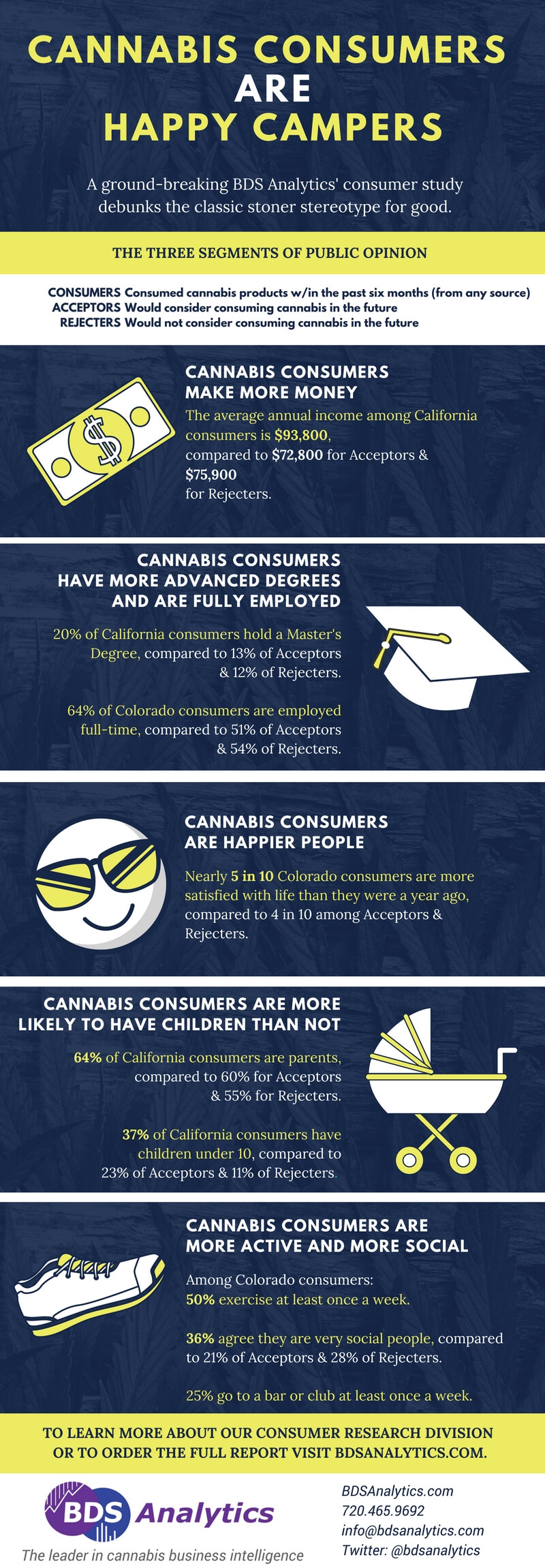As the cannabis landscape continues to rapidly evolve, California is seeing both industry members and consumers shift their focus toward a new set of standards. With the populace voting in favor of legalizing adult recreational use of cannabis in November 2016, people are buzzing with conversations and opinions around this booming marketplace.
As cannabis enters the mainstream, people are being inundated with information. There are thousands of strains, hundreds of medical uses and countless online forums to discover anything from recipes to growing techniques to educational information.
This information overload can prove overwhelming for both experienced users and those who are just discovering the benefits of cannabis. With a complex history and daily debates on everything from production standards to how, when, and where cannabis can legally be enjoyed, how do we know what information is important for safe consumption?
A variety of people – from parents to working professionals – began to ask exactly that question, which lead to a further list of inquiries:
- Who is growing the plants?
- Which farmers use pesticides?
- Do the extractors use solvents?
- How did my local dispensary decide to carry these products?
- Should I only consume this product before bed, or is it okay to enjoy before I go to work?
- How much do I take if I want to relax without reaching a state of complete euphoria?
A new wave of consumers are discovering the variety of flowers, oils, and edibles offered in California, and they’re finding that cannabis and its positive effects not only fit their lifestyle but enhance it. Evidence shows that many are active, healthy people who understand that wellness requires a conscious effort. These consumers hold producers accountable and are aware of the ingredients and processes behind the purchases they make.
In this vein California’s cannabis users are driving a seed-to-sale movement, moving the industry towards full transparency. Much like the farm-to-table movement in the culinary world, seed-to-sale aims to show consumers how the cannabis products they want to enjoy are produced, from growing to extraction and production.
The seed-to-sale movement is made possible, in part, by software and technology that play a major role in farming, transportation and sale of cannabis. Showing the process from start to finish is helping to create a standard of transparency in the cannabis industry.
As of June 14, 2017, the California Department of Food and Agriculture instituted a mandatory track-and-trace system for all seeds grown in California. This law was already in effect for medical cannabis businesses, but now the rules apply for both medicinal and recreational production. All cannabis businesses are required to record the data about the entire product lifecycle, including (source):
- Its genetic origins.
- All growing conditions, such as water, light, pesticides, equipment, and biological matter used.
- Weight at various growing times, including vegetative stages, flowering and harvest.
- Detailed potency descriptions.
- Company and person responsible for distribution and delivery.
- How it enters production and what product it becomes.
- Retailer responsible for selling cannabis products.
- Person involved in buying cannabis products.
Regulators aren’t the only ones taking the seed-to-sale movement seriously. Growers Network partnered with The Cannabist and created Canna Cribs to document the ins-and-outs of the cannabis industry. The first episode of Canna Cribs showcases a state-of-the art greenhouse in Southern California that grows 10,000 plants at a time. They’re making the cannabis community widely accessible for anyone and everyone.
Yes, there is a lot to contend with when it comes to sifting through all the information related to cannabis. However, those who are interested in finding out more about the process, from seed-to-sale, can access this information from various online sources.
Before purchasing you can watch Leafly’s Seed-To-Sale series to see exactly how legal cannabis is produced from start to finish. When buying at a dispensary, be sure to ask the budtender questions – their role includes helping you understand various product alternatives, and helping you become comfortable with what you are buying.
Do you know where your cannabis comes from?
Feel free to reach out via email at [email protected] with any questions or comments you may have. Follow us on Instagram and Facebook to see what’s new and exciting in the market, to see what we’re up to day-to-day and learn about our latest products. Stay connected on the latest 3Leaf news and blog posts by signing up for our newsletter.

